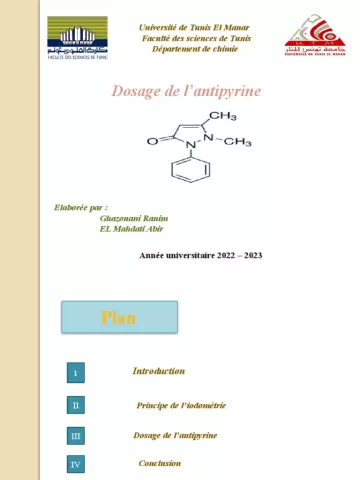- Author Rachel Wainwright [email protected].
- Public 2023-12-15 07:39.
- Last modified 2025-11-02 20:14.
Antipyrine
Instructions for use:
- 1. Composition and form of release
- 2. Pharmacological action
- 3. Indications for use
- 4. Contraindications to use
- 5. Method of administration and dosage
- 6. Side effects
- 7. Interaction with other medicinal products

Antipyrine - the international name Phenazone, belongs to the drugs of the NSAID group (non-steroidal anti-inflammatory drugs). Phenazone was one of the first analgesics to be synthesized (1884). Currently, it is not widely used, however, Antipyrin has been preserved in the nomenclature of medicines. This drug is not currently used in children due to its toxicity.
Composition and form of release
The drug is available in the form of powder, tablets of 0.1 g and 0.25 g. A 10-20% solution (pH 6.0-7.5) is made from the powder, which is sterilized at a temperature of 120 ° C for 20 minutes. Suppositories with antipyrine for rectal and vaginal administration are currently not manufactured.
Pharmacological action of Antipyrin
According to the instructions Antipyrine has antipyretic, analgesic and anti-inflammatory effects. The pharmacological action of the drug is associated with its ability to inhibit inflammatory enzymes (cyclooxygenase) and, as a result, disrupt the synthesis of prostaglandins (biological active substances involved in the process of inflammation). In terms of antipyretic and analgesic properties, Antipyrin is close to salicylic acid preparations (Aspirin).
When applied topically, the drug has a hemostatic (hemostatic) effect.
Indications for use
According to the instructions for Antipirin, its purpose is indicated for neuralgia, colds, in the complex therapy of rheumatism, joint diseases with pain syndrome, feverish conditions. Also, the drug is used for inflammatory diseases of the prostate gland, inflammatory gynecological processes. Topically Antipyrine is used for nosebleeds.
Contraindications to the use of Antipyrine
Hypersensitivity to the drug, blood diseases. There is no data on the possibility of using the drug during pregnancy and lactation, therefore, if it is necessary to prescribe anti-inflammatory therapy, other drugs with a similar effect should be preferred.
Method of administration and dosage

Antipyrine in tablet form is applied orally at 0.25-0.5 g (maximum single dose of 1 g) 2-3 times a day. The maximum daily dose for adults is 3 g.
To stop nosebleeds, a 10-20% Antipyrin solution is used, with which wipes or tampons are moistened.
Suppositories with Antipyrine were prescribed rectally or vaginally, 2-3 times a day, however, they are currently being replaced with other drugs of similar action.
Side effects of Antipyrine
Allergic reactions in the form of urticaria, rash, anaphylactic shock. Also possible: collapse, cyanosis, lower body temperature, increased heart rate, agranulocytosis (a sharp decrease in the number of blood granulocytes), depression, delusional states.
Due to the inhibition of bone marrow hematopoiesis (hematoxicity), Antipyrine is currently not recommended for use in pediatric practice.
Interaction with other medicinal products
Medicines with myelotoxic effect (toxic effect on bone marrow cells) enhance the hematotoxic effect of Antipyrin.
Information about the drug is generalized, provided for informational purposes only and does not replace the official instructions. Self-medication is hazardous to health!






